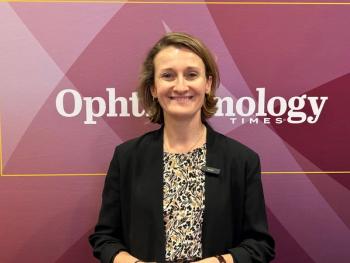
Repeatability of selective laser trabeculoplasty (SLT) supported by retrospective study
The repeatability of selective laser trabeculoplasty (SLT) was investigated in a retrospective study which included 52 eyes that were phakic, had primary open-angle glaucoma or pseudoexfoliation glaucoma, and maintained successful IOP control for at least 1 year after initial SLT.
Key Points
Dr. Bournias, assistant clinical professor of ophthalmology, Northwestern University Feinberg School of Medicine, Chicago, reported results from a retrospective study including 52 re-treated eyes of 52 patients that had successful IOP control for at least 1 year after initial SLT. Success was defined as an IOP decrease of at least 3 mm Hg to a level below 21 mm Hg.
A successful response to the repeat treatment was maintained in 47 (90%) of the 52 eyes through 12 months of follow-up without any significant adverse events (i.e., significant iritis or IOP spikes >6 mm Hg). Postoperative management included topical NSAIDs, with only a few patients who required a topical cor ti co ster oid.
SLT has been offered at Northwestern University since it was approved by the FDA in 2001. The treatment is performed with a frequency-doubled Q-switched 532-nm laser (Selecta 7000, Lumenis) by applying 90 to 100 confluent spots (400 μm) over 360° using an energy of 0.6 to 1.3 mJ.
In the retrospective analysis of SLT repeatability, eyes included were phakic, had a diagnosis of POAG or PXE, and maintained a successful response to initial SLT for at least 1 year with subsequent loss of efficacy prior to re-treatment. Eyes with any previous ocular laser or other surgery and those with other types of glaucoma were excluded.
The 52 patients that met the study criteria had an average age of 70 years and included a slight predominance of females (56%). The majority were white (58%) and the rest were black or Hispanic. They were receiving zero to three medications for IOP control during the course of the study.
Mean IOP prior to the first SLT was 21.1 mm Hg; at 12 to 18 months, these eyes had an average IOP reduction of about 4.1 mm Hg that was statistically significant.
At the time of re-treatment, the eyes had an average IOP of 20.8 mm Hg. IOP was reduced significantly by an average of 3.8 mm Hg 1 year later. Of the five eyes in which success was not maintained at 1 year, two required further intervention.
The investigators also performed an ethnic-racial subgroup analysis and found no significant difference in the mean IOP reduction achieved after repeat treatment between the black/Hispanic and white patients, 3.77 versus 3.83 mm Hg, respectively.
Success rate with ALT
"That finding contrasts with a previous analysis we conducted of ALT outcomes that showed after initial treatment, the success rate at 1 year was 80% among whites and only 52% among blacks," noted Dr. Bournias.
Discussing the strengths and limitations of the retrospective study, Dr. Bournias noted it had a fair sample size and excellent follow-up because there were no dropouts in the series. In addition, the same parameters were used throughout the study to assess outcomes: patients returned for follow-up visits on a set schedule, all IOP values were based on the average of two measurements, and treatment failure was defined by failure to meet the target IOP at two consecutive visits. In addition, to minimize bias associated with population heterogeneity, the eyes included were limited to those with certain types of glaucoma, all were phakic, and none had previous surgery.
"We encourage other investigators, however, to conduct prospective, randomized, controlled trials to help answer the question of how many times SLT can be successfully performed in one eye and also to compare the long-term efficacy between ALT and SLT, including repeat procedures," said Dr. Bournias.
Newsletter
Don’t miss out—get Ophthalmology Times updates on the latest clinical advancements and expert interviews, straight to your inbox.




















































.png)


